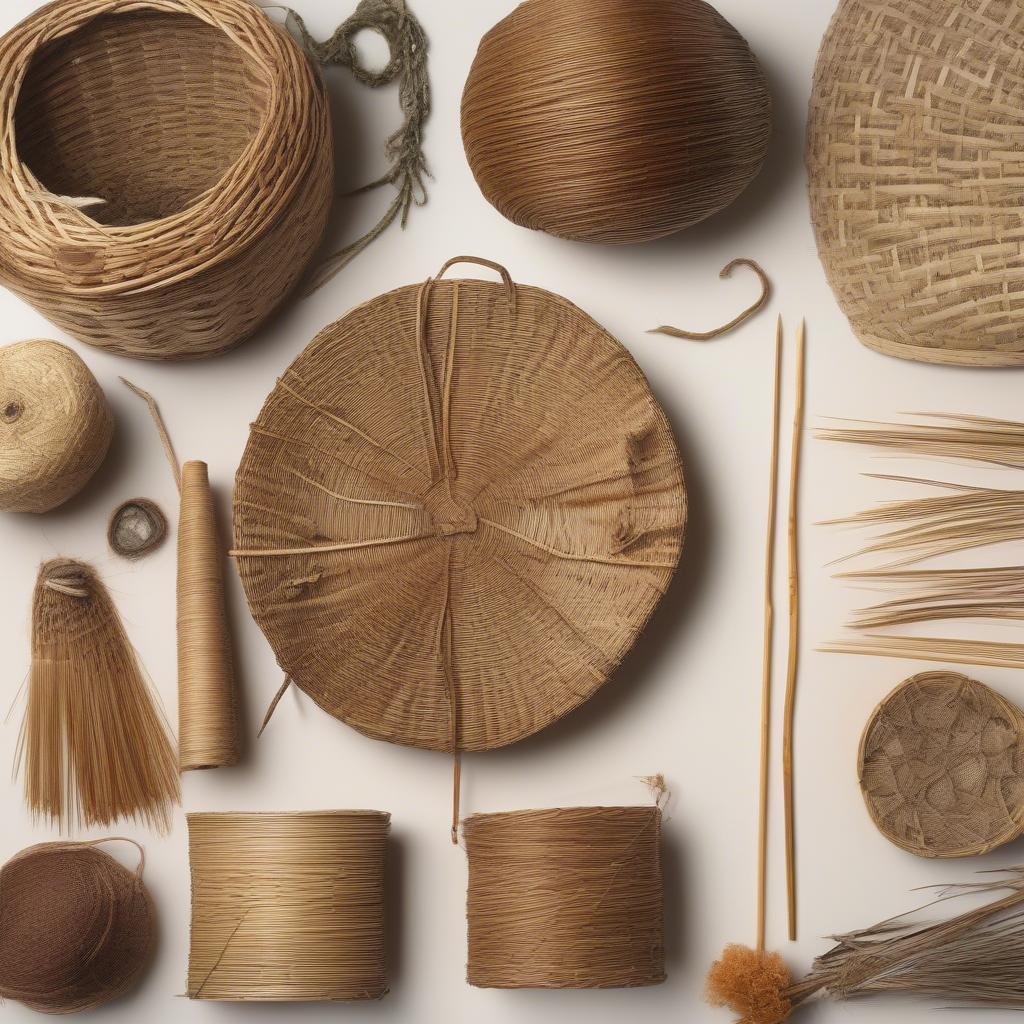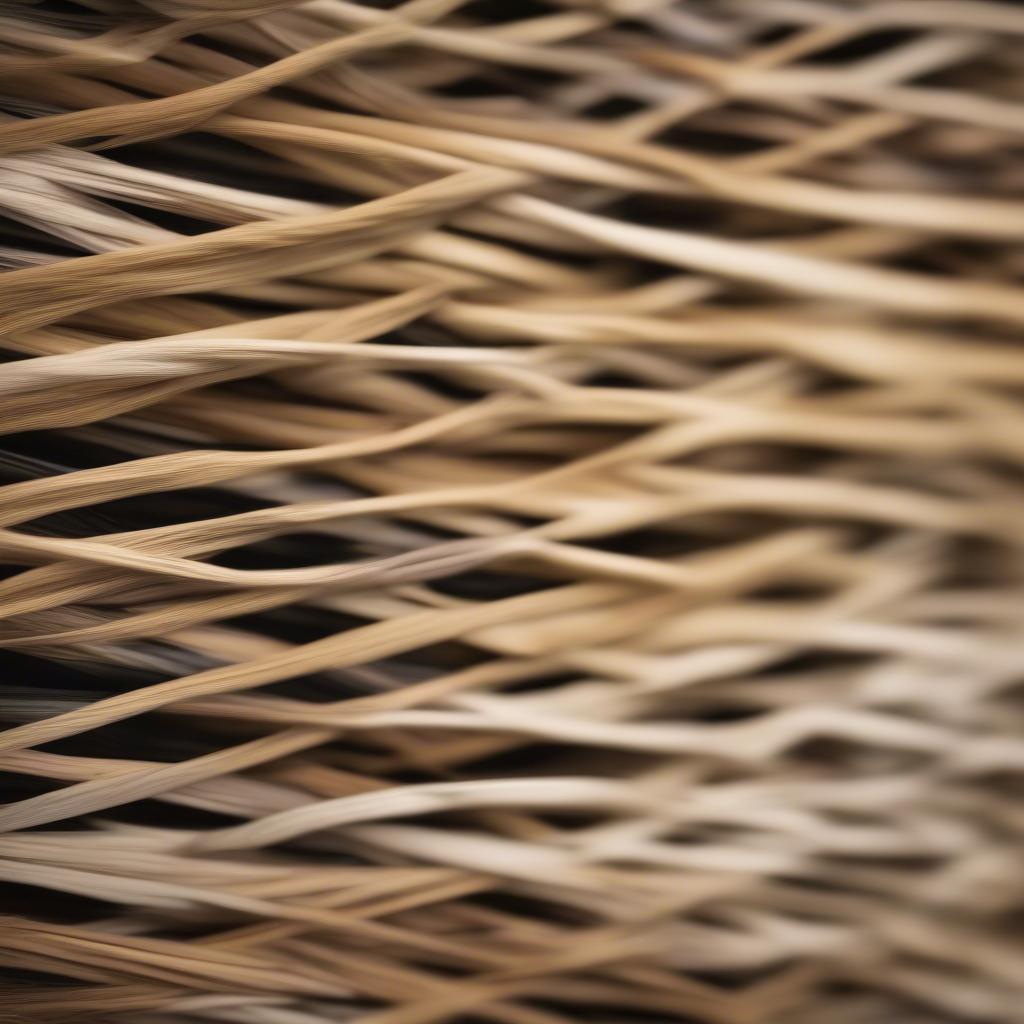Basket Weaving
What Do They Use for Basket Weaving? A Comprehensive Guide
Basket weaving, a timeless craft, relies on a fascinating array of materials. From the familiar reeds and willows to more exotic options, the materials used dictate the basket’s final form, function, and aesthetic appeal. Understanding these materials is key to appreciating the artistry and skill involved in creating these beautiful and functional pieces. Let’s delve into the world of basket weaving materials and uncover the secrets behind this ancient craft.
 Natural Materials Used in Basket Weaving
Natural Materials Used in Basket Weaving
Exploring the Diverse World of Basket Weaving Materials
Choosing the right material is crucial in basket weaving. Factors to consider include the desired flexibility, strength, color, and even the cultural significance of the material. While traditional materials remain popular, contemporary basket weavers are also experimenting with innovative and sustainable options, pushing the boundaries of this ancient craft.
Natural Fibers: The Heart of Basketry
Natural fibers form the backbone of basket weaving. These materials, derived from various plant sources, offer a range of properties that cater to different basketry styles and purposes. Let’s examine some of the most common natural fibers:
- Reed: Known for its durability and readily available nature, reed is a staple in basket weaving, perfect for creating sturdy baskets for storage or everyday use.
- Willow: Willow’s flexibility allows for intricate designs and delicate shapes, making it ideal for creating beautiful and functional baskets. how to hand weave a basket will guide you to weave a basket successfully.
- Cane: Cane’s strength and smooth texture make it suitable for furniture and larger basketry projects.
- Bamboo: The rapid growth and strength of bamboo make it a sustainable and versatile option, increasingly popular in modern basketry.
- Pine Needles: A readily available material in many regions, pine needles offer a unique texture and rustic charm to woven creations.
 Variety of Basket Weaving Fibers
Variety of Basket Weaving Fibers
Beyond the Basics: Expanding Material Horizons
Basket weaving isn’t limited to traditional materials. Many artisans incorporate other natural elements to add unique textures and visual interest to their work. These materials include:
- Bark: Birch bark, known for its beauty and durability, is often used for decorative elements or to create entire baskets.
- Grasses: Various grasses, like sweetgrass and seagrass, offer unique textures and add a touch of natural elegance to baskets.
- Roots: Roots from certain trees and plants can be harvested and processed for basket weaving, adding strength and a rustic touch.
Modern Materials: Innovation in Basketry
While natural materials remain the core of basket weaving, some artisans are exploring modern materials like:
- Recycled Plastics: Using recycled plastics provides a sustainable alternative and allows for unique colors and textures.
- Fabric Scraps: Weaving with fabric scraps offers a creative way to repurpose materials and create vibrant, textured baskets.
What Materials Are Best for Beginners?
For those just starting with basket weaving, basket weaving forms are important, reed and raffia are excellent choices. They are readily available, relatively inexpensive, and easy to manipulate. Check out our weaved plant basket for inspiration.
 Basket Weaving Tools and Materials
Basket Weaving Tools and Materials
Expert Insights
Maria Rodriguez, a renowned basket weaver with over 20 years of experience, emphasizes the importance of material selection: “Choosing the right material is crucial. It’s like selecting the right paint for a painting – it dictates the final outcome.”
John Smith, another expert in the field, adds, “Experimenting with different materials is part of the joy of basket weaving. It allows you to discover new textures, colors, and forms, pushing the boundaries of your creativity.”
Conclusion: The Essence of Material in Basket Weaving
What do they use for basket weaving? The answer is diverse and fascinating. From the traditional reed and willow to innovative recycled materials, the options are vast and constantly evolving. Understanding the characteristics of each material is key to appreciating the artistry and skill of basket weavers worldwide. Whether you’re a seasoned artisan or a beginner, exploring the world of basket weaving materials opens up a world of creative possibilities. Learn how to use basket weave tip to help you start.
FAQ
- What is the most common material used in basket weaving? Reed is one of the most common materials due to its availability and durability.
- What materials are best for beginners? Reed and raffia are good choices for beginners.
- Can I use recycled materials for basket weaving? Yes, recycled plastics and fabric scraps can be used creatively in basket weaving.
- What material is best for making strong baskets? Cane and bamboo are known for their strength and are suitable for larger baskets and furniture.
- Where can I find basket weaving materials? Craft stores, online retailers, and even your own backyard can be sources for basket weaving materials.
- How do I prepare natural materials for weaving? Many natural materials require soaking before weaving to make them pliable.
- What are some unique materials used in basket weaving? Bark, roots, and various grasses offer unique textures and possibilities for basket weaving.
Have you ever seen a wool basket weave jacket?
Need support? Contact us at Hanoi, Vietnam or Tech Avenue, Suite 12, San Francisco, CA 94105, USA. Our customer service team is available 24/7.
